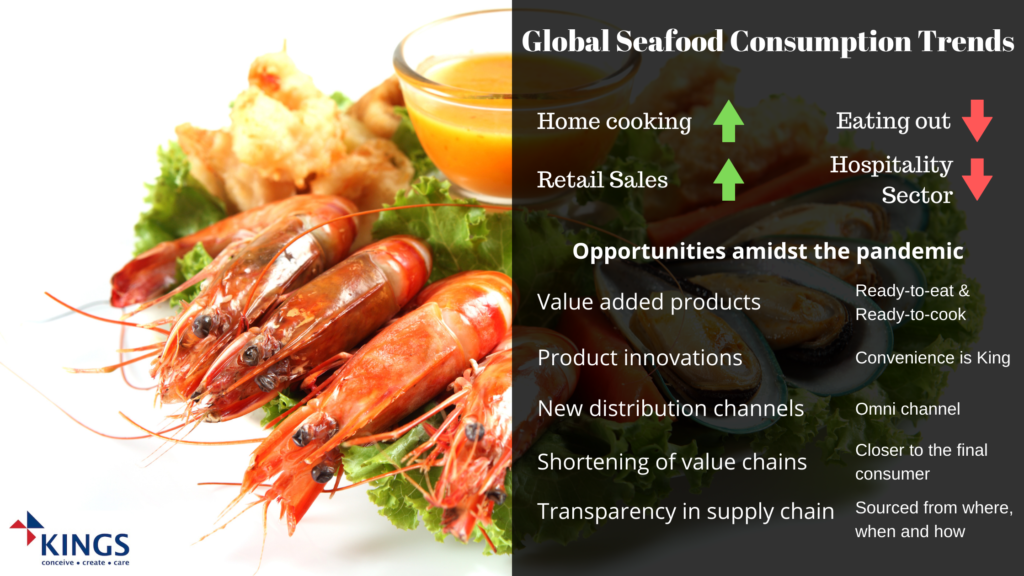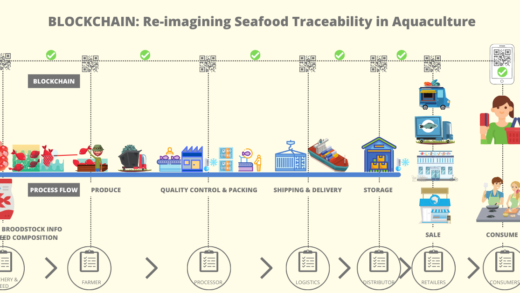
Global seafood consumption trends.
The global food industry is one of the few industries that has withstood the onslaught of the COVID-19 pandemic. This is despite the adverse impact due to supply chain disruptions, closure of food production facilities and change in consumer behaviour. With an unprecedented surge in consumer demand due to overstocking and panic induced excess purchases during the initial days of the pandemic, the revenue of the global food industry jumped by 20% year-over-year, reaching $8.27 trn in 2020. Of this, the convenience food segment witnessed massive sales growth with revenues surging by 76% year-over-year to $763.5 bn in 2020. The global fish and seafood market segment jumped approximately 14% in 2020.
The industry has witnessed new trends in consumer demand for seafood where cooking at home has become the new norm and has been driving retail sales through convenient stores, supermarkets and online. At the same time, eating out has come to a standstill with closure of restaurants, and with non-existent international travel and tourism the hospitality sector has been severely impacted.
The present scenario has forced the incumbent players in the industry to re-examine the traditional ways of doing business, and has also created opportunities for new entrants who can innovate to serve new consumer trends better.
The demand for value added products such as prepared seafood, meal kits, ready-to-cook and ready-to-eat are on the rise. Consumers are looking for easier ways of preparing and having food at home. They are also trying to re-create their favourite restaurant dishes at the comfort of their home. Convenience in terms of consistent quality, storage ability, lesser handling and user-friendly packaging are of top priority now along with a hassle-free experience of purchase through any distribution channel whether it be supermarket, online or the neighbour hood grocery store.
In order to cater to customers via home delivery by restaurants, but with the inability to retain the full strength of staff, a lot more of the value addition processing of seafood such as cutting, cleaning, etc. are passed on to processors. Whereas exclusive cloud kitchens located outside the main city premises, having significantly lower overheads are able to compete with the traditional restaurants and cater directly to the consumer.
And now more than ever, consumers want transparency in their seafood wanting to know when, where and how it was sourced, the story behind it and whether it was all done fairly, safely, hygienically and sustainably.
The companies who dig into these opportunities and create products, services and supply chain relationships that cater to these emerging consumer demands will thrive and dominate the coming decade!
Data sources:
2. Statista.com


